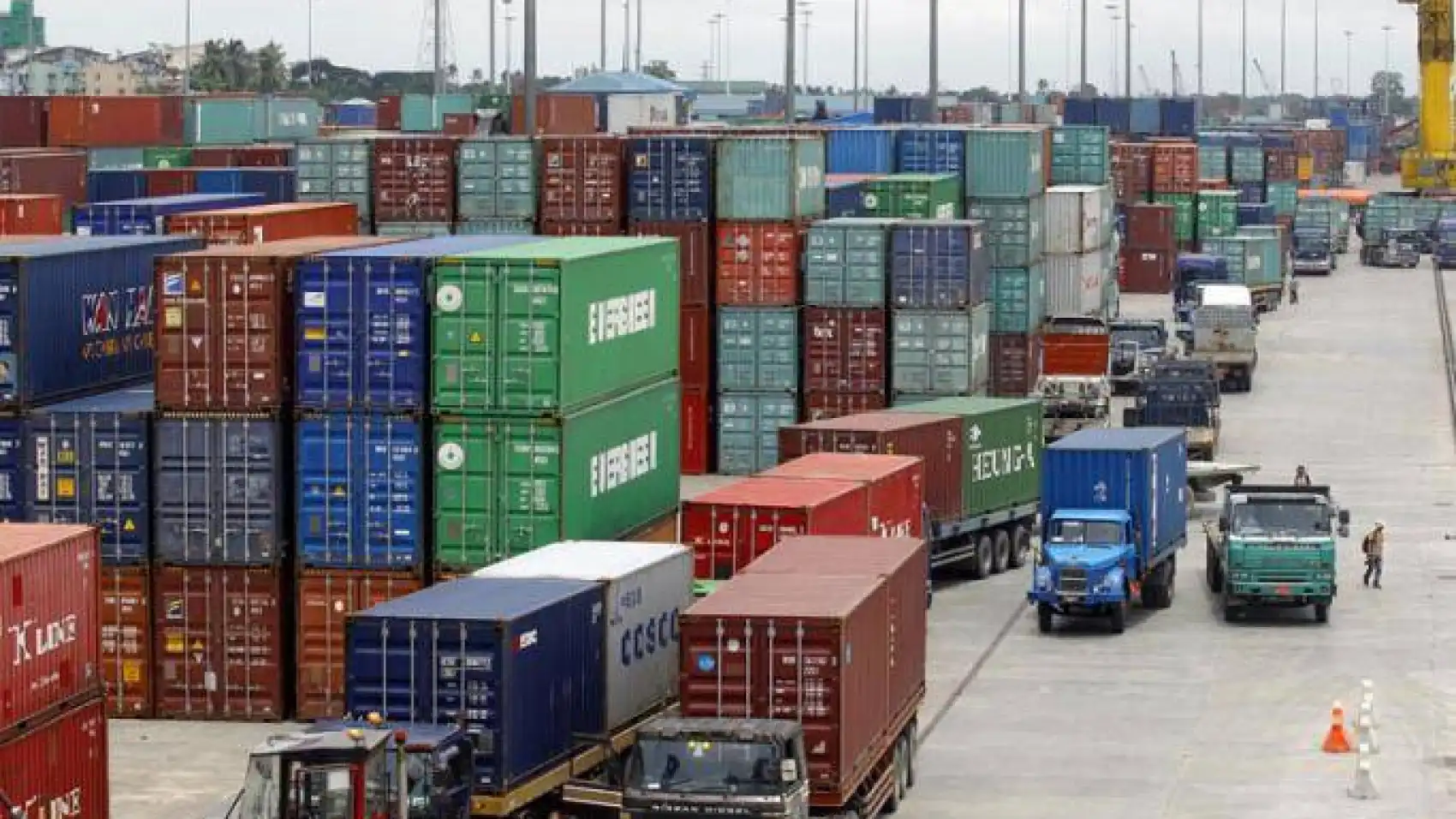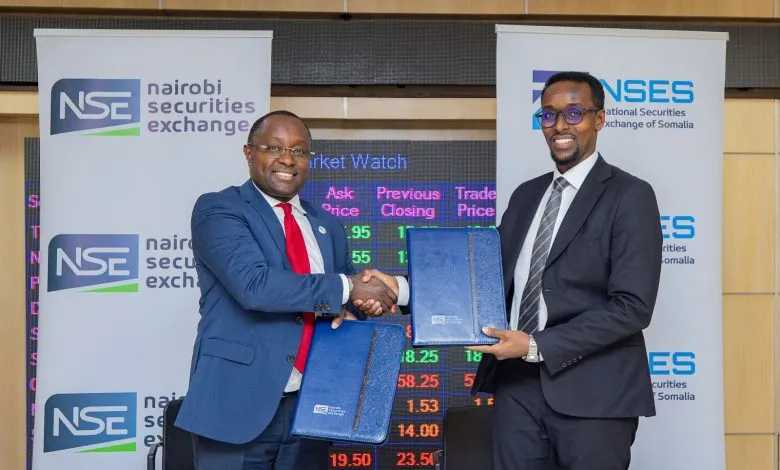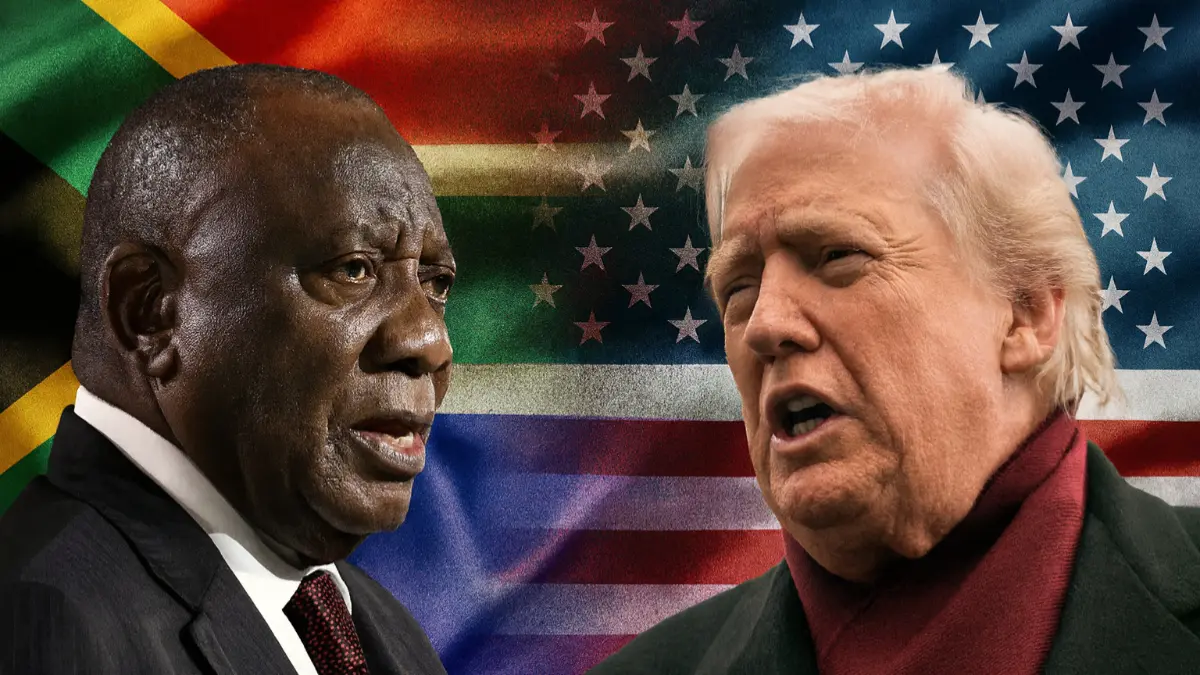Kenya faces a devastating economic crisis as sophisticated criminal networks systematically drain between Sh243 billion and Sh253 billion annually from the national economy through illicit trade activities, according to a comprehensive joint report by the National Taxpayers Association and Oxfam. This staggering figure, which has more than doubled over the past four years, represents nearly 10% of Kenya’s national budget—resources that could transform the country’s healthcare and education sectors.
One decision can change your entire career. Take that step with our Online courses in ACCA, HESI A2, ATI TEAS 7, HESI EXIT, NCLEX-RN, NCLEX-PN, and Financial Literacy. Join Serrari Ed and start building your brighter future today.
The scale of these losses underscores the urgent need for coordinated action against criminal cartels, counterfeiters, and corrupt trade networks that are undermining Kenya’s economic stability and fiscal health. The hemorrhaging of public resources occurs through multiple channels, with counterfeit products alone costing the government over Sh153 billion every year, while trade misinvoicing has emerged as a silent but substantial contributor to the economic drain.
The Counterfeit Economy: A Pervasive Threat
The counterfeit trade has become deeply embedded in Kenya’s economy, with the Anti-Counterfeit Authority reporting that one in every five items sold in the country is fake. This alarming statistic reflects the sophistication and scale of criminal networks that have established parallel supply chains designed to exploit legitimate markets while evading regulatory oversight and taxation.
Cigarettes, alcohol, pharmaceuticals, spare parts, textiles, and manufactured items represent the most affected sectors, with illicit cigarettes alone costing Sh6 billion in lost taxes annually. The alcohol sector faces particularly severe challenges, with illegal products accounting for 21% of the market and resulting in nearly Sh67 billion in lost revenue between 2021 and 2023.
Kenya Revenue Authority records highlight the enforcement challenges facing authorities. While goods worth Sh243 million were seized and destroyed in 2024, up from Sh200 million the previous year, these figures represent merely the tip of the iceberg. Recent multi-agency operations demonstrate both the determination of enforcement agencies and the scale of the challenge they face.
In September 2025, coordinated operations in Kirinyaga and Uasin Gishu counties resulted in the seizure of illicit goods valued at over Sh46 million, averting potential tax losses of Sh19 million. These operations, involving the Directorate of Criminal Investigations, National Police Service, and local administrators, recovered contraband cigarettes, counterfeit excise stamps, and illegal alcohol manufacturing equipment.
Trade Misinvoicing: The Silent Revenue Drain
Trade misinvoicing has emerged as one of the most sophisticated and damaging forms of economic crime affecting Kenya. This practice involves the deliberate misrepresentation of the value, quantity, or nature of goods in international trade transactions to manipulate customs duties, taxes, and foreign exchange regulations.
Using the partner country method—a forensic accounting technique that compares Kenya’s import records with export figures reported by trading partners—analysts have identified massive discrepancies in trade documentation. Between 2015 and 2023, trade misinvoicing accounted for approximately Sh711 billion in unrecorded financial flows, averaging Sh79 billion per year.
The practice is particularly prevalent in trade relationships with major partners including China, India, and the United Arab Emirates. “For example, China reported exporting goods worth significantly more to Kenya than what Kenya declared as imports, pointing to possible under-invoicing,” explained Saidimu Terra Leseeto, Senior Advisor for Tax and Fiscal Affairs in the Office of the President.
Between 2016 and 2024, discrepancies in trade documentation totaled $144 billion (Sh18 trillion), revealing the systematic nature of this economic crime. Historical analysis shows that Kenya has long struggled with trade misinvoicing, with Global Financial Integrity research indicating that such practices contributed to 8.3% of total government revenue losses between 2002 and 2011.
Sectoral Impact Analysis
Textile and Apparel Industry
The textile sector faces counterfeit trade worth Sh80 billion, particularly affecting yarn products such as fabrics, threads, and ropes. This illegal trade undermines legitimate manufacturers who invest in quality control, worker safety, and proper taxation while competing against products that circumvent regulatory requirements and social responsibilities.
Pharmaceutical Sector
Counterfeit medicines represent a particularly dangerous aspect of the illicit trade problem, with the Kenya Association of Pharmaceutical Industry previously estimating that fake medicines accounted for approximately Sh9 billion in annual sales, representing 20-25% of the total legal pharmaceutical market.
The health implications extend far beyond economic losses, as counterfeit medications can fail to treat diseases effectively or, worse, contain harmful substances that endanger patients’ lives. This dual impact—economic and public health—makes pharmaceutical counterfeiting one of the most serious aspects of Kenya’s illicit trade challenge.
Automotive Parts and Manufacturing
The automotive sector suffers significant losses from counterfeit spare parts that not only undercut legitimate businesses but also pose serious safety risks to consumers. These products often fail to meet safety standards and can cause vehicle accidents, creating liability issues and public safety concerns beyond the immediate economic impact.
Build the future you deserve. Get started with our top-tier Online courses: ACCA, HESI A2, ATI TEAS 7, HESI EXIT, NCLEX-RN, NCLEX-PN, and Financial Literacy. Let Serrari Ed guide your path to success. Enroll today.
Multi-Agency Enforcement Challenges
The fight against illicit trade requires unprecedented coordination among multiple government agencies, each with specific mandates and capabilities. The Kenya Association of Manufacturers has advocated for an Enforcement Multi-Agency Team approach that encompasses all key stakeholders in intelligence sharing and targeted enforcement operations.
Current enforcement architecture involves several key institutions:
- Kenya Revenue Authority: Tax collection and customs enforcement
- Anti-Counterfeit Authority: Intellectual property protection and counterfeit prevention
- Kenya Bureau of Standards: Quality control and standards compliance
- Kenya Ports Authority: Import/export clearance and documentation
- Directorate of Criminal Investigations: Criminal investigation and prosecution
- National Police Service: Operational support and security
Despite this comprehensive institutional framework, enforcement gaps persist, with criminal networks often staying one step ahead of regulatory responses through sophisticated evasion tactics and corruption of enforcement processes.
Economic and Social Consequences
The scale of losses represents a catastrophic drain on Kenya’s development potential. The Sh250 billion in annual losses could theoretically double the health allocation in the national budget or provide free secondary education for all Kenyan children. The Tax Justice Network adds that tax abuse alone costs Sh25 billion annually—enough to cover 9.5% of health spending or 4% of education expenditure.
These losses occur against the backdrop of Kenya’s challenging fiscal position, with the government facing significant budget deficits while trying to meet development goals and infrastructure needs. The hemorrhaging of public resources through illicit trade undermines the government’s ability to provide essential services and invest in economic growth initiatives.
“The gaps are widening, and this should be a concern for Kenya’s fiscal health. Unless addressed, these practices will continue undermining economic growth and fair competition,” warned Leseeto during the report’s presentation.
Regional and International Context
Kenya’s illicit trade challenges reflect broader patterns affecting developing economies globally. Research by Global Financial Integrity demonstrates that trade misinvoicing is hampering economic growth across multiple African countries, with Kenya historically experiencing significant losses alongside Ghana, Mozambique, Tanzania, and Uganda.
The regional nature of these challenges requires coordinated responses through frameworks such as the East African Community (EAC), the Common Market for Eastern and Southern Africa (COMESA), and the African Continental Free Trade Area (AfCFTA). Kenya’s position as a regional trade hub makes it both a target for illicit traders and a critical player in regional enforcement efforts.
Technological and Methodological Sophistication
Modern illicit trade networks employ increasingly sophisticated techniques to evade detection and prosecution. Digital technologies enable complex schemes involving multiple jurisdictions, shell companies, and anonymous financial transfers that traditional enforcement methods struggle to detect and counter.
The partner country methodology used in the recent report represents an advancement in forensic accounting techniques for detecting trade misinvoicing. By systematically comparing trading partner reports, analysts can identify patterns of systematic under-reporting or over-reporting that indicate fraudulent activity.
However, criminal networks continuously adapt their methods to counter detection efforts, requiring constant innovation in enforcement techniques and international cooperation mechanisms.
Consumer Awareness and Market Dynamics
Consumer behavior plays a crucial role in sustaining illicit trade markets. Research indicates that many consumers unknowingly purchase counterfeit products, often attracted by lower prices without understanding the associated risks and economic implications.
The Anti-Counterfeit Authority has launched public education campaigns to raise awareness about the dangers of counterfeit goods and teach consumers identification techniques. These initiatives recognize that reducing demand requires addressing both information asymmetries and economic pressures that drive consumers toward cheaper, potentially fake alternatives.
Local manufacturers have implemented anti-counterfeiting measures such as product codes and SMS verification systems, but these add costs and may not adequately protect against increasingly sophisticated counterfeiting techniques.
Corruption and Institutional Challenges
The persistence and scale of illicit trade despite extensive regulatory frameworks suggests significant corruption within enforcement institutions. Criminal networks often exploit corrupt officials to facilitate customs clearance, avoid inspections, or receive advance warning of enforcement operations.
Addressing this corruption requires not only strengthening institutional controls and accountability mechanisms but also addressing the economic incentives that make corruption attractive to low-paid enforcement officials. Comprehensive reforms must address both systemic vulnerabilities and individual accountability.
International Trade Integration Challenges
Kenya’s integration into global trade networks creates both opportunities and vulnerabilities. While international trade agreements like the Strategic Trade and Investment Partnership (STIP) with the United States and the Economic Partnership Agreement with the European Union offer enhanced market access, they also create new channels that illicit traders can exploit.
The complexity of modern supply chains makes it increasingly difficult to verify the authenticity and proper taxation of goods as they move through multiple jurisdictions and intermediaries before reaching Kenyan consumers.
Recommendations and Policy Interventions
Addressing Kenya’s illicit trade crisis requires coordinated action across multiple dimensions:
Institutional Strengthening
Enhanced coordination among enforcement agencies through formal intelligence-sharing protocols and joint operation procedures. This includes establishing clear lines of authority and accountability for multi-agency operations while preventing jurisdictional conflicts that criminal networks can exploit.
Technology Integration
Investment in modern customs technology including blockchain-based tracking systems, AI-powered risk assessment algorithms, and real-time data sharing platforms that can detect suspicious patterns in trade documentation and financial flows.
International Cooperation
Strengthened bilateral and multilateral agreements for information sharing, mutual legal assistance, and coordinated enforcement operations with key trading partners, particularly those identified as sources of significant trade misinvoicing.
Private Sector Engagement
Enhanced partnerships with legitimate businesses to develop industry-specific anti-counterfeiting strategies, support whistleblower protection programs, and create economic incentives for compliance with authentic supply chains.
Long-term Economic Implications
The continued hemorrhaging of resources through illicit trade threatens Kenya’s economic development trajectory and competitiveness. Manufacturing sector development, which accounts for only 7.8% of GDP despite Kenya being East Africa’s most industrially developed country, faces particular challenges from unfair competition from counterfeit and smuggled goods.
The cumulative impact of these losses compounds over time, creating a vicious cycle where reduced government revenues limit infrastructure investment and institutional capacity building, which in turn makes the country more vulnerable to illicit trade networks.
Conclusion: The Imperative for Action
Kenya’s annual loss of Sh250 billion to illicit trade represents more than an economic challenge—it constitutes a fundamental threat to the country’s development aspirations and social contract with its citizens. The sophisticated nature of these criminal networks requires equally sophisticated responses that combine technological innovation, institutional reform, international cooperation, and sustained political commitment.
The recent report by the National Taxpayers Association and Oxfam provides a crucial wake-up call about the scale and sophistication of illicit trade networks operating in Kenya. However, documentation alone is insufficient—translating these findings into effective policy interventions and enforcement actions will determine whether Kenya can stem this economic hemorrhage or continue to watch critical development resources flow into the pockets of criminal cartels.
The path forward requires unprecedented coordination among government agencies, private sector partners, international allies, and civil society organizations. Success will be measured not only by the value of goods seized or prosecutions secured but by the restoration of fair competition, increased government revenues, and enhanced public trust in Kenya’s economic institutions.
As the report warns, unless urgent measures are taken, Kenya’s economic growth, fair competition, and fiscal stability will remain under persistent threat from increasingly sophisticated criminal networks that exploit gaps in enforcement capacity and institutional coordination. The time for comprehensive action is now, before these losses become permanently embedded in Kenya’s economic structure.
Ready to take your career to the next level? Join our Online courses: ACCA, HESI A2, ATI TEAS 7 , HESI EXIT , NCLEX – RN and NCLEX – PN, Financial Literacy!🌟 Dive into a world of opportunities and empower yourself for success. Explore more at Serrari Ed and start your exciting journey today! ✨
Track GDP, Inflation and Central Bank rates for top African markets with Serrari’s comparator tool.
See today’s Treasury bonds and Money market funds movement across financial service providers in Kenya, using Serrari’s comparator tools.
Photo source: Google
By: Montel Kamau
Serrari Financial Analyst
19th September, 2025
Article, Financial and News Disclaimer
The Value of a Financial Advisor
While this article offers valuable insights, it is essential to recognize that personal finance can be highly complex and unique to each individual. A financial advisor provides professional expertise and personalized guidance to help you make well-informed decisions tailored to your specific circumstances and goals.
Beyond offering knowledge, a financial advisor serves as a trusted partner to help you stay disciplined, avoid common pitfalls, and remain focused on your long-term objectives. Their perspective and experience can complement your own efforts, enhancing your financial well-being and ensuring a more confident approach to managing your finances.
Disclaimer: This article is for informational purposes only and does not constitute financial advice. Readers are encouraged to consult a licensed financial advisor to obtain guidance specific to their financial situation.
Article and News Disclaimer
The information provided on www.serrarigroup.com is for general informational purposes only. While we strive to keep the information up to date and accurate, we make no representations or warranties of any kind, express or implied, about the completeness, accuracy, reliability, suitability, or availability with respect to the website or the information, products, services, or related graphics contained on the website for any purpose. Any reliance you place on such information is therefore strictly at your own risk.
www.serrarigroup.com is not responsible for any errors or omissions, or for the results obtained from the use of this information. All information on the website is provided on an as-is basis, with no guarantee of completeness, accuracy, timeliness, or of the results obtained from the use of this information, and without warranty of any kind, express or implied, including but not limited to warranties of performance, merchantability, and fitness for a particular purpose.
In no event will www.serrarigroup.com be liable to you or anyone else for any decision made or action taken in reliance on the information provided on the website or for any consequential, special, or similar damages, even if advised of the possibility of such damages.
The articles, news, and information presented on www.serrarigroup.com reflect the opinions of the respective authors and contributors and do not necessarily represent the views of the website or its management. Any views or opinions expressed are solely those of the individual authors and do not represent the website's views or opinions as a whole.
The content on www.serrarigroup.com may include links to external websites, which are provided for convenience and informational purposes only. We have no control over the nature, content, and availability of those sites. The inclusion of any links does not necessarily imply a recommendation or endorsement of the views expressed within them.
Every effort is made to keep the website up and running smoothly. However, www.serrarigroup.com takes no responsibility for, and will not be liable for, the website being temporarily unavailable due to technical issues beyond our control.
Please note that laws, regulations, and information can change rapidly, and we advise you to conduct further research and seek professional advice when necessary.
By using www.serrarigroup.com, you agree to this disclaimer and its terms. If you do not agree with this disclaimer, please do not use the website.
www.serrarigroup.com, reserves the right to update, modify, or remove any part of this disclaimer without prior notice. It is your responsibility to review this disclaimer periodically for changes.
Serrari Group 2025












